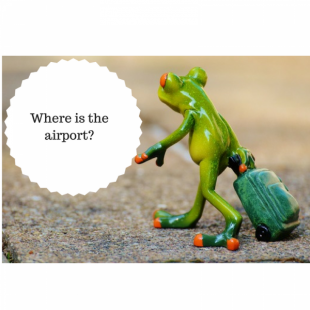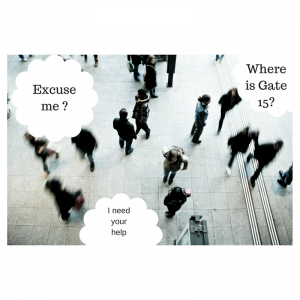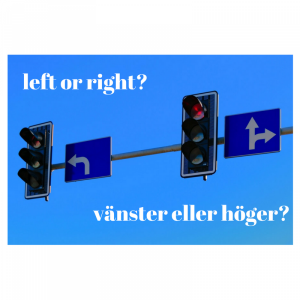Swedish occupations and workplaces vocabulary
Sign up for free to get all information about private lessons and our available group courses (A1, A2, B2, B2, C1, C2)
Sign up for freeSign up for free to get all information about private lessons and our available group courses (A1, A2, B2, B2, C1, C2)
Sign up for freeOccupations are a very imporant in the Swedish community, they help the public understand the different roles and daily lives of others, they show different authorities and show how the country is organised. They show the different professions, interests and backgrounds Sweden has and how the Swedish culture is practised in the community. This lesson will cover the Swedish occupations, building and stations and how to used them in sentences. Pay attention and try memorise as much vocabulary as you can.
Note! There are over 800 different occupations in Sweden, the table below will outline the most common and popular professions.

Swedish occupations | Definition in English |
| poliser | Police officers |
| doktorer | doctor |
| sjuksköterska | nurse |
| brandman | firefighter |
| accismästare | customs officer |
| ackuschörska | a midwife |
| adjunkt | teacher |
| busschaufför | bus driver |
| taxichaufför | taxi driver |
| servitör | waitor |
| lärling | apprentice |
| advocat | lawyer |
| aktris | actress |
| aktör | actor |
| predikant | preacher |
| fotbollsspelare | football player |
| jordbrukare | farmer |
| avisskrivare | newswriter |
| barberare | barber |
| befordrare | promoter |
| bergmästare | minemaster |
| bevakningsbefälhavare | captain of the watch |
| bibliotekarie | librarian |
| blockmakare | block maker |
| blystöpare | plumber |
| brevbärare | letter carrier, postman |
| domare | judge |
| krukmakare | Potter |
It is also important that you know where all these people work and how you can communicate with them. In sweden crimes are very low, but this doesn't mean that the authorities should never be alerted or be useful for common daily issues such as loosing your phone or wallet or in case of road accidents. Below you will learn on how to Swedish residents and professionals.
Note! the examples below can be used for different purposes, and for anybody.
Take online language lessons with a professional teacher

Knowing what buildings are called in Swedish is very important, you will be able to navigate around Sweden without any problem. In case of any emergency you will be able to know and give clear information of where you need to go. Below you will see how different buildings and stations are said in Swedish and a short dialogue will follow.
Workplace and stations in Swedish | English version |
| polisstation | police station |
| brandstation | fire station |
| flygplats | airport |
| hamn | port |
| postkontor | post office |
| mataffär | grocery store |
| bageri | bakery |
| sjukhus | hospital |
| bank | bank |
| tågstation | trainstation |
| busstation | bus station |
| tunnelbanestation | metro station |
| spårväg station | tramway station |
| hem- | home |
If you haven't had a look at the Swedish cuisine vocabulary lesson or if you have, here is a small summary on asking for directions and how to get to places . The example will come as a short possible dialogue with a stanger and gaps will appear where workplaces should be.
Hej ursäkta mig, vet du var den närmaste ... är?
Hello excuse me, do you know where the nearest... is ?
Hmm, ja! Gå förbi det vita huset, korsa övergångsstället och sväng höger.
Hmm, yes ! Walk past the white house, cross the pedestrian crossing and turn right.
jag förstår
I understand
Då du kommer att se ... till höger.
Then you will see... on the right.
Tack!
Thank you!
Inga problem!
No worries!
This short dialogue gives you a clear idea of what a conversation where you are want to go from point A to B will sound like. It is important to know how to approach civilians in their language they will be more than happy to help and guide you.
Note! in Swedish in order to say excuse me, it is Ursäkta, this only means excuse, in swedish the 'me' is not required. Below you will find more vocabulary and possible sentences regarding other types of directions.

| Kan du säga det en gång till? | Could you say it one more time? |
| Kan du säga det lite långsammare? | Could you say it a little slower? |
| Gå rakt fram | Walk straight ahead |
| Sväng till vänster | Turn left |
| Sväng till höger | Turn right |
| Korsa | Cross |
| Fortsätt | Continue |
| Var finns närmaste _____? | Where is the closest ____? |
| På din vänstra sida ser du | On your left hand side you’ll see |
| Jag förstår inte | I don’t understand |
We hope you have enjoyed the lesson and now you feel more comfortable with direction vocabulary. Try and get more familiar with asking questions, practice the dialogue with different words and use a friend to help you. see you soon!